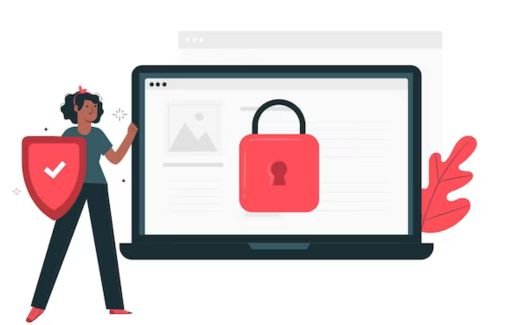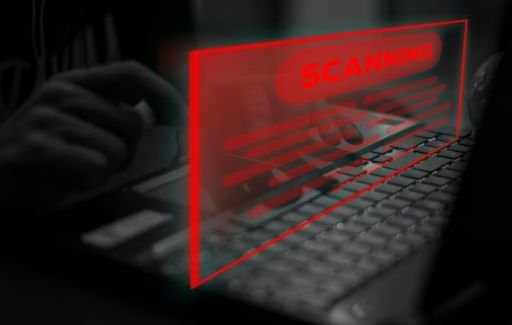


With so much of our lives now transpiring online, verifying the legitimacy of websites before sharing personal information or making purchases has become a crucial act of self-defence.
We entrust platforms both new and familiar with sensitive data, financial accounts, and access to our devices - making ourselves vulnerable to frauds, hackers, and sophisticated scammers if we interact with shady sites.
Just because a website looks clean and professional does not mean it is trustworthy. Skilled con artists can mimic authentic interfaces and content. This makes running proper checks essential.
The internet is filled with websites making all kinds of offers and claims. But how do you know which sites are legitimate and which ones you should avoid? With online scams and fraud on the rise, it's important to be able to verify a website's trustworthiness before providing any personal or financial information.
This guide will teach you how to spot red flags and use online tools to check if a website is legit or a scam.
While scammers are getting more sophisticated in creating convincing websites, there are still telltale signs to look out for:
Carefully check that the URL matches the company's real website address. Scam sites often use slight variations.
Domains ending in .com or .net rather than the company name are suspicious. Legitimate sites usually use their brand name in the URL.
Amateurish design with stock images, grammar errors, and broken links indicates a lack of effort put into the site.
Scam sites try to harvest personal and financial data. Avoid giving any info before verifying it's a real company.
Unbelievable deals, investment returns, and unrealistic income opportunities are almost always scams.
Legitimate businesses display a real street address, phone number, and customer service options.
Sloppy writing filled with typos is a red flag that it's not a professional company.
Scam sites often post unrealistic, overly positive reviews to boost credibility. But the writing style is awkward.
By being aware of these common indicators of a scam, you can quickly identify and avoid many shady websites. When in doubt, use online tools to double-check.

If a website appears suspicious, specialized online tools can verify if it's legitimate and safe to use.
Google Safe Browsing will check URLs against their constantly updated database of risky sites identified by them and their partners. Their advanced scanners look for phishing attempts, malware, unwanted software, and other threats. Their diagnostic page will rate the site as either Safe, Unsafe or Might Be Unsafe.
SiteAdvisor by security software company McAfee performs deep analysis on sites including download safety, corporate reputation, privacy concerns, annoying ads, and browser exploits. Their colour-coded rating system makes it easy to see if a site is safe or risky to visit.
This tool by cybersecurity leader Norton scans websites for viruses, malware, phishing scams, and other online threats. It assigns a safety rating and displays user reviews about the legitimacy of the site.
Trend Micro checks websites for fraud, malware, spam activity, and cybercrime connections. It provides a simple grade from A+ to F so you can quickly gauge the reputation and trustworthiness of any URL.
SpywareGuide identifies if sites contain adware, spyware, viruses, trojans, or hijackware. It's a quick free check if any potentially unwanted programs will be installed. The results indicate if the site is clean or infected.
PhishTank allows users to contribute and look up websites identified as phishing scams. Their database helps identify fake sites designed to steal login credentials and personal information. It's integrated with popular web browsers to block known scam URLs.
Beyond checking scam site databases, here are some proactive steps you can take to determine if an unfamiliar website is legitimate and trustworthy:
Real companies display a contact page with phone numbers, emails, and physical addresses you can independently verify. Scams typically lack working contact info.
Run a web search for “[site name] reviews” and “[site name] complaints” to find third-party reports about the real experience customers have with the company.
The Alexa browser extension shows the global traffic ranking and ownership info for any website. WhoIs lookups reveal when a domain was registered and basic details about who owns it.
Professional associations like BBB, TRUSTe, and Internet Commerce Security Council indicate a website adheres to standards for authenticity. Verified logos build credibility.
Initiating a live chat, sending emails, or calling can determine if a company has a real customer service team prepared to respond. Scam sites typically can't engage beyond the website itself.
Taking a few minutes to thoroughly vet an unfamiliar website can save you from headaches down the road. Following the guidance outlined here will help you identify fraud and feel confident you are safe when browsing and shopping online. Trust your instincts, leverage scam check tools, and verify legitimacy from multiple angles.
A: Warning signs include a dubious URL, amateur design, pervasive spelling errors, unrealistic claims or reviews, missing contact info, and requests for personal data without cause.
A: Google Safe Browsing, Norton Safe Web, and McAfee SiteAdvisor utilize extensive databases updated daily to identify unsafe and scam websites known to be spreading malware, phishing, or other threats.
A: Yes, scammers are making websites appear more authentic. Always verify sites by searching for reviews, checking certifications, and validating contact details - don't rely on appearance alone.
A: Trust your instincts. Check the site against scam databases, search for reviews before providing info, try to contact customer service, and report concerns to organizations like the Better Business Bureau to help others avoid scam risks.
A: Some examples are fake retail stores, fraudulent investment sites, questionable charities, online dating scams, work-from-home/make-money gigs, fake technical support pages, and sites selling medicines or products that seem too good to be true.
The web is filled with pitfalls and predators trying to take advantage of unsuspecting visitors. But armed with the right knowledge of red flags and scam detection tools, you can browse, shop, and search online with greater awareness and safety.
Taking a few quick steps to check website legitimacy can defend you from fraud, identity theft, malware, wasted money, and other hassles. Be vigilant, lean on-site reputation scanners, and verify safety before providing any sensitive information.